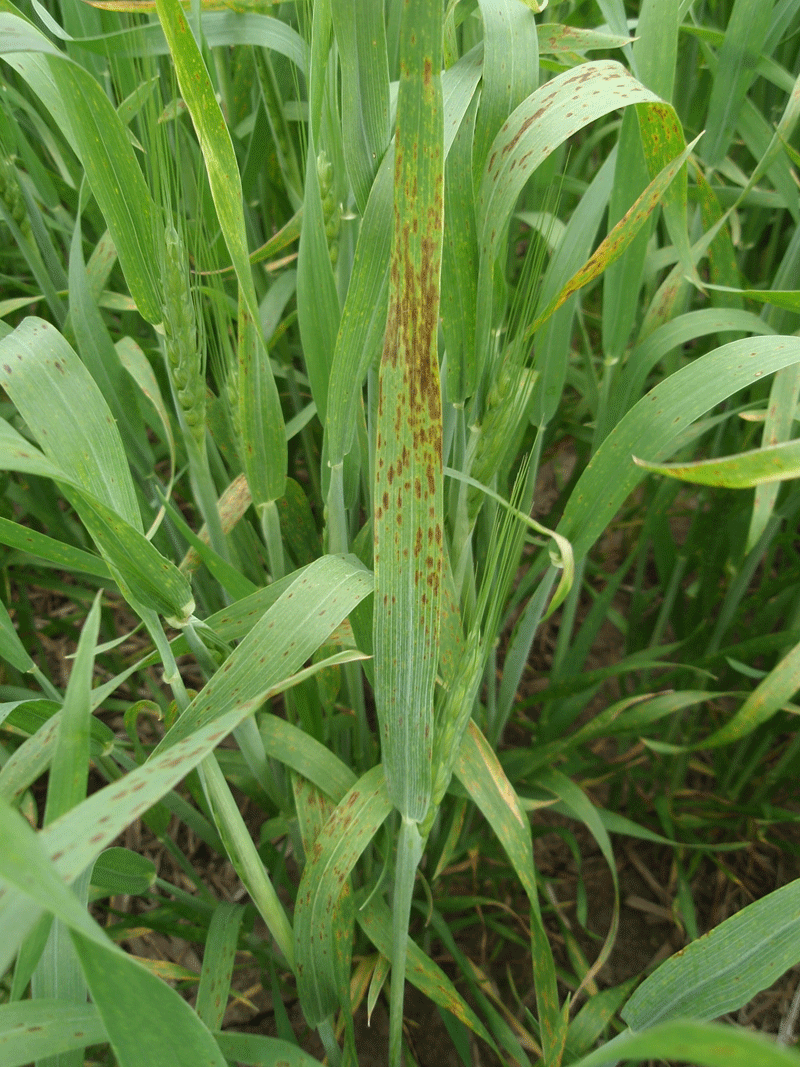Weeds in winter wheat
SCOUT EARLY, CONTROL WEEDS EARLY AND AVOID DANGEROUS MIXES THAT MAY CAUSE INJURY
although not as commonly talked about, wheat may have a critical weed free period just like corn and soybeans. “Recent research coming out of the UK demonstrates the importance of controlling weeds early in the growing season,” explains Peter Johnson, wheat specialist with OMAFRA. Research shows that it is critical that weeds be controlled before wheat meets Zadocks 30 or stem elongation. In Ontario, that stage can range anywhere from April 20 to May 5 depending on the season.
Johnson’s OMAFRA collegue and weed specialist Mike Cowbrough agrees. “The real pragmatic thing for growers is that weed control is most important prior to putting the wheat in the ground,” says Cowbrough. But, he recognizes the challenges with weed control prior to planting in the fall. “It’s often difficult for growers to fit in a pass of the field with herbicide in the fall. Often wheat is going in right as soybeans are coming off and there isn’t time,” Cowbrough continues.
Below: Crop injury as a result of an Estaprop-Folicur tank mix.

The timing pressure in the fall often means that weed control in wheat gets pushed off to spring.
In the spring, many farmers wait to apply herbicides until later in the season in order to control both early- and late-emerging weeds in one pass. Although this may seem like sound logic, both Johnson and Cowbrough agree that it is more important to control weeds that emerge early in the season.
“I worry about one dandelion in a 10 square meter area more than I do about 100 ragweed plants in that same area on the 5th of May,” says Johnson, illustrating the importance of early weed control.
Cowbrough reinforces this statement and explains that “if competition is going to influence wheat it’s when the weeds are there early on.”
cold condition concerns
Although the agronomic benefits of spraying herbicides on wheat early in the spring are obvious, there has been some concern expressed over the interaction between herbicides and cold temperature. Research is currently underway at the University of Guelph looking at any potential relationships between spraying in cold temperatures and plant injury.
“Although more trials are needed, the first year of data shows that applying herbicides at cold temperatures does not result in significant plant injury,” says Melody De Jong, a graduate researcher working on the project with Drs. Peter Sikkema and François Tardiff. She continues to explain that “growth stage is more of a contributing factor to potential plant injury caused by herbicides than temperature.”
Despite the lack of significant plant injury, researchers did observe some concerning results after applying herbicides in cold temperatures. “With some herbicides, we did notice typical hormonal injury after the application during the frost event. We saw the wheat lying over,” explains De Jong. “However,” she continues, “the plants grew out of this injury.”
De Jong is still analyzing the yield data from these plots, but she hypothesizes there will be no yield loss as a result of these early season injuries.
These initial findings are based on one year of plot trials at four locations throughout the province. “We are still analyzing the data and we will be doing more plot trials next year to confirm our initial findings,” says De Jong.
tank mixes and crop injury
Weather conditions are not the only concern when managing weeds in winter wheat. While many farmers strive to save time and fuel by tank mixing herbicides and fungicides, research shows there may be concerns about the interaction and plant injury.
De Jong’s research also examined the potential for crop injury when tank mixing these crop protection products.
“In the herbicide and fungicide trials, anything tank mixed with Estaprop generally showed a certain amount of hormonal injury,” says De Jong.
Johnson confirms this finding and emphasizes that this injury can be more pronounced when the tank mix is applied in cold conditions. “In some fields, I’ve seen a growth response where the whole crop lays down,” says Johnson. “Under cold temperatures, the wheat crop loses the ability to metabolize the hormonal herbicide. It will stand back up and seemingly grow out of it, but you may see problems at heading,” he continues.
De Jong is continuing research on this interaction in the growth room. “We didn’t see any injury with Folicur or Estaprop on their own which leads us to believe it is the interaction between the two,” explains De Jong.
The research also saw some negative impacts from applying a tank mix of Buctril M and Quilt at a later stage of the wheat crop — flag leaf emergence or Zadocks 37. Yield data is still being analyzed to determine if this impact comes with a yield penalty.
Although more research is needed and currently underway, it’s important for farmers to be aware of the possible impacts of their spray decisions on their wheat crop. In addition to keeping up to date on current research, it’s also important to scout early.
“I’ve said it a million times and I’ll say it again,” says Johnson, “get into your wheat fields and take a look around early in the season. You need to know what you’re up against if you have any hope in managing it.” •





















